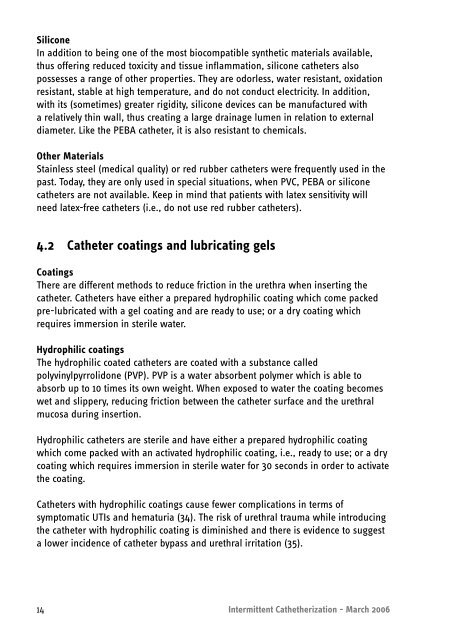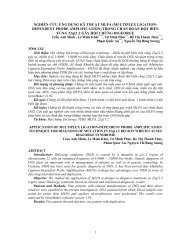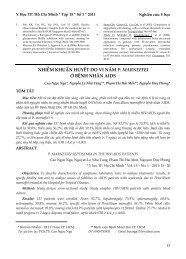1. Intermittent catheterization - European Association of Urology
1. Intermittent catheterization - European Association of Urology
1. Intermittent catheterization - European Association of Urology
You also want an ePaper? Increase the reach of your titles
YUMPU automatically turns print PDFs into web optimized ePapers that Google loves.
Silicone<br />
In addition to being one <strong>of</strong> the most biocompatible synthetic materials available,<br />
thus <strong>of</strong>fering reduced toxicity and tissue inflammation, silicone catheters also<br />
possesses a range <strong>of</strong> other properties. They are odorless, water resistant, oxidation<br />
resistant, stable at high temperature, and do not conduct electricity. In addition,<br />
with its (sometimes) greater rigidity, silicone devices can be manufactured with<br />
a relatively thin wall, thus creating a large drainage lumen in relation to external<br />
diameter. Like the PEBA catheter, it is also resistant to chemicals.<br />
Other Materials<br />
Stainless steel (medical quality) or red rubber catheters were frequently used in the<br />
past. Today, they are only used in special situations, when PVC, PEBA or silicone<br />
catheters are not available. Keep in mind that patients with latex sensitivity will<br />
need latex-free catheters (i.e., do not use red rubber catheters).<br />
4.2 Catheter coatings and lubricating gels<br />
Coatings<br />
There are different methods to reduce friction in the urethra when inserting the<br />
catheter. Catheters have either a prepared hydrophilic coating which come packed<br />
pre-lubricated with a gel coating and are ready to use; or a dry coating which<br />
requires immersion in sterile water.<br />
Hydrophilic coatings<br />
The hydrophilic coated catheters are coated with a substance called<br />
polyvinylpyrrolidone (PVP). PVP is a water absorbent polymer which is able to<br />
absorb up to 10 times its own weight. When exposed to water the coating becomes<br />
wet and slippery, reducing friction between the catheter surface and the urethral<br />
mucosa during insertion.<br />
Hydrophilic catheters are sterile and have either a prepared hydrophilic coating<br />
which come packed with an activated hydrophilic coating, i.e., ready to use; or a dry<br />
coating which requires immersion in sterile water for 30 seconds in order to activate<br />
the coating.<br />
Catheters with hydrophilic coatings cause fewer complications in terms <strong>of</strong><br />
symptomatic UTIs and hematuria (34). The risk <strong>of</strong> urethral trauma while introducing<br />
the catheter with hydrophilic coating is diminished and there is evidence to suggest<br />
a lower incidence <strong>of</strong> catheter bypass and urethral irritation (35).<br />
14 <strong>Intermittent</strong> Cathetherization - March 2006

















